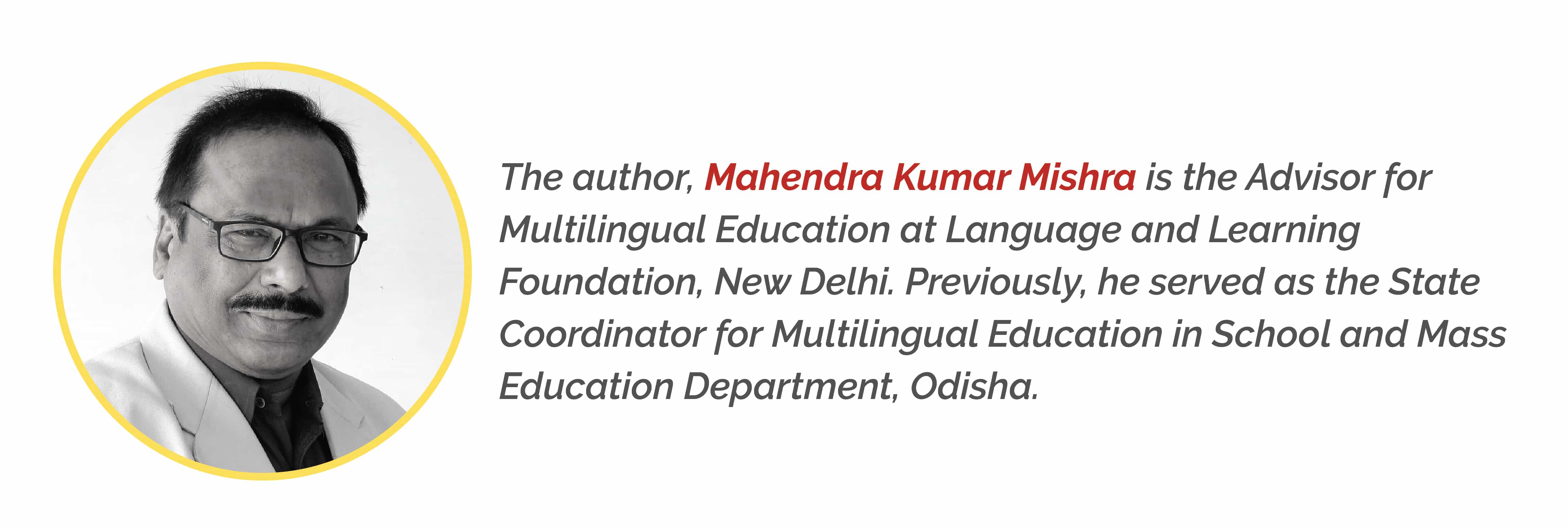
Articles 29 and 30 of the Indian constitution safeguards the rights of linguistic, cultural, and religious minorities. Thus, Cultural and Educational Rights mandates that citizens have the right to preserve their culture and language, and majority linguistic groups cannot impose their language on them. This has to be taken into account when education policies are formulated at different times. However, the school as a standardized monolingual model set up by colonial rules has not yet been able to articulate this spirit of the constitution and education policies, and there is a massive gap between the minds of the policy formulators and the teachers. Teachers are limited to a syllabus, and the largely textbook transaction is focused on preparing children for exams. This is done by offering them a load of information that has to be mastered through rote memory, and mostly in a language that the children may not be familiar with. The national goal of helping children move out of their small tribal groups and making them into national and global beings, while still retaining a strong connection with their local culture, remains an imagined ideal. The process of disseminating the national goal rarely reaches teacher training institutions, and ‘critical thinking’ remains outside a teacher’s comprehension.
As long as the school is monolingual, and the children are multilingual, there will be no way that the school and its system will be able to accommodate different languages and cultures in its teaching and its curriculum. Another barrier is that even if the state has the political will to implement a multilingual approach, they do not know how to proceed since this is largely untested and there are very limited frames of references in the Indian context. Education policies provide states the freedom to prepare their own curriculum in their state-specific language, and design content to represent their identity in the textbooks. To this end, state textbook writers pick up some cultural symbols from their states like a great man, some temples, random ecological species, heritage of cultural significance, as tokenism to state identity. Briefly, this is the macro curriculum. What it does not include is the sub-cultural systems, which represent the majority of the population of that state. The language and culture of a state, thus defined in their textbooks, can in no way reflect all the languages and customs of that place unless textbook writing is decentralized all the way down to districts and distinct sub-district linguistic areas. For a truly representative and integrated curriculum, there needs to be clarity of the national goal of education. A national curriculum means it must represent a village curriculum at the school. How does this take place?
The scope for inclusion of state specificity in a curriculum is possible at best in social sciences, and literature and language. The states of India do have a standard mathematics framework adopted universally. In the case of science, the local nomenclature of biology or natural science finds no mention in the textbooks. Students grapple with technical botanical words as if these objects are not in their environment. For instance, many students will stumble over a mouthful of bassia longifolia or basia latifolia, a botanical name in their science textbook, which is more popularly known as mahua to the tribal and rural students. But they will learn it without being able to connect it to what they are already familiar with. While mango in the Saora language is called ‘uda’, it is known as ‘amba’ in Odia, but in a botany textbook, it is named Mangifera Indica! The Teachers’ so-called expertise is based on and limited to textbooks since their accountability is derived from their students’ achievement in the examination, which is standardized and based on textbook terminologies.
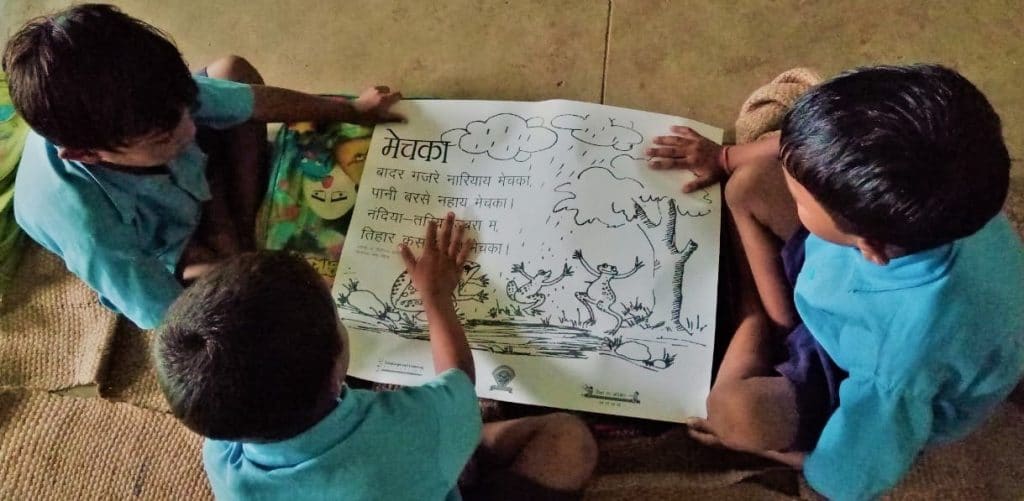
An important precondition for meaningful learning is the child’s language. When a child observes her nature and social environment, she is using her home language to make sense of it, whatever that language may be! She has not made any distinction in her mind between her mother tongue, first language, home language, or local language. She thinks, analyzes, interprets, and also uses creative speech with deep meaning and with an ability to communicate and receive the discourse of the language she is most familiar with. It means she can decode and go down to the deep sense of her language, ie, the hidden meaning. But when the same child goes to a class and her teacher rejects her language and her words for objects, she is familiar with, she starts withdrawing from the class. For example, her teacher will show her a picture of a mango, a fish, and an elephant, and insist that they call them not as ‘udaa’, ‘aaya’, ‘raa’ respectively, but with new words she has never heard. Consider this from a child’s point of view- her teacher has rejected her experience, her language, her belief, in front of the whole class. This experience in which the child suffers in silence can have a severe psychological effect on her. She is left thinking, what must the rest of the children be thinking about me, about my language? Simultaneously, this incident may have caused other children in the classroom to close their lips with a fear of being humiliated by the teacher. This suffering in silence and in turn staying silent cannot be good for a child’s development. This is a general scenario of rural and Indian classroom where every day, millions of children are denied the chance to speak in their language. Even in some English medium schools for high society, children are stopped from speaking in their language and if at all they use it, they are either punished or their parents are summoned and asked to restrain their children from speaking the home language. Semi-literate parents also start practicing English at their home in an attempt to socialize their child into this power-laden language. This restriction from all sides inflicted upon the child is undoubtedly against their natural development, and is bad for their cognitive growth and self-identity. Such rejection and hate cannot help build a nation, which prides itself on having its own knowledge system.
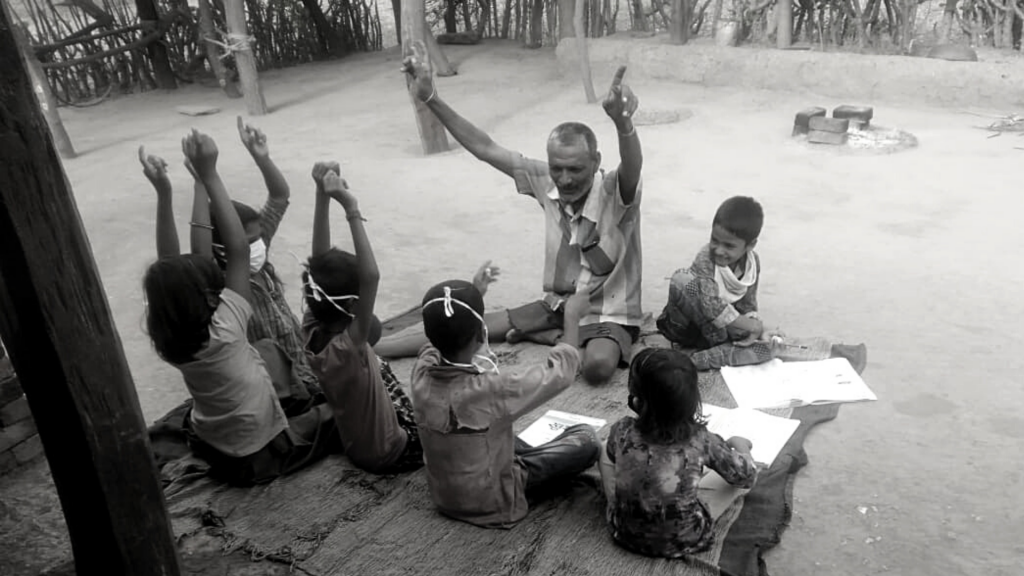
The Kothari Commission uses two terms. One is ‘National Integration’ which allowed for scheduled languages to be used in school and colleges, and the second is ‘Social Integration’ which was for the rest of the society to support nonscheduled languages in their social domain. In what way can language, culture, identity, and knowledge be legitimized so that an Indian Knowledge system is established in schools? Can national integration be achieved through legitimizing some scheduled languages, while depriving recognition to a majority of non- scheduled languages? To our knowledge, multilinguality and the many languages in India has connected different ethnic and religious groups, rather than dividing them. A Hindi poet using Urdu and Persian in her modern poetry or short stories has never been a contentious issue. Similarly, without the nonscheduled languages, no national language can develop.
NEP 2020’s aspiration for promoting multilingualism in schools is a welcome step, but the advocacy of the three language formula to promote this repeats Kothari Commission’s dichotomy between national integration and social integration, rather than resolve it. In essence, it means that states can decide the medium of instruction in schools by choosing the home language/ mother-tongue/ local language and regional language, wherever possible. But which language is appropriate where and how will the state decide which language to choose, when they do not have the expertise or even school wise linguistic data? How will children coming with knowledge of more than two languages use their language in the classroom? The state has a huge challenge to develop foundational literacy with a focus on comprehension and meaning-making through the child’s language. However, many states are keen to use English from class-I itself to provide global opportunities to their children. The fallacy that by learning English, their children will excel in the worldwide market is ingrained in most literate and semi-literate people When children are not achieving competency in a regional language after studying it for ten years, as evidence from the achievement results in Hindi in Secondary school level indicate, how can the same students excel in academic English and compete for the global market? If this is the condition of those students whose mother tongue is not different from the medium of instruction in schools, then what about the tribal and other students whose home language is foreign from the state medium of instruction?
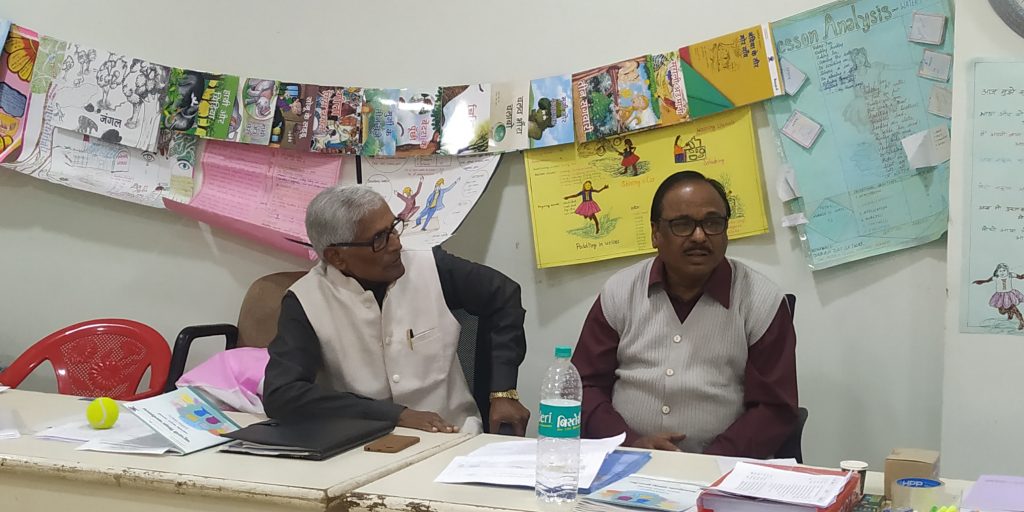
Therefore the flexible approach suggested by the NEP 2020 may seem like a breakthrough. However, over the last 60 years, the issue of using a child’s mother tongue has been part of almost all national policies on education, which most states have not included in their planning or implemented in their state curriculum. There could be two reasons for this lack of connection between policy documents and what happens in the states. One could be that the system is not interested in plunging into the intricacies of languages in education and is more interested in maintaining the status quo. Two, it could be to do with the process through which such a programme is to be made possible. The Indian states have a lot of independence in deciding the language of education and none so far paid it adequate attention or have successfully managed to come up with a model that can be replicated or used as a model by other states. Mere preparation of bridge language courses and bilingual dictionaries is not multilingual education. It needs theoretical pedagogical underpinnings which are patiently tried and tested in classrooms, and investment of time and human energy to see how the imagined multilinguality works out in the schools. If we take the school as the actual representation of the social knowledge along with the new understanding of the school curriculum, then there can be a connection between the local knowledge and broader Indian knowledge.
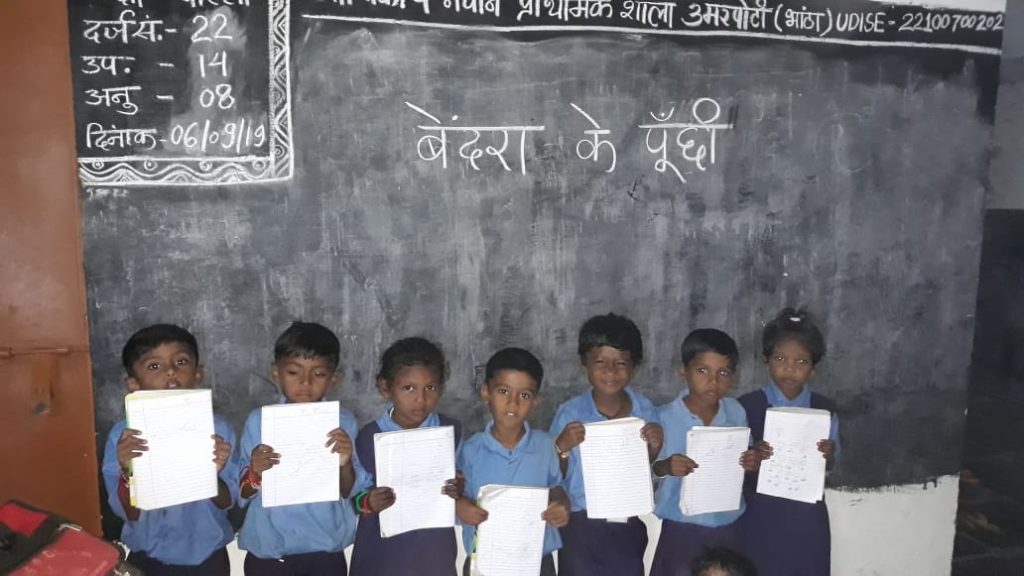
Multilinguality can be like a buffet where a variety of food and dishes is on offer. At a buffet, we are interested in trying everything, and we will not think about eating one kind of food or dish exclusively. Let’s put it another way. The word ‘multi’ exists in all walks of life. Its importance and need are denied or restricted. However, in schools by imposing uniformity in terms of a singular language, this necessary human natural order is violated, and by this human experience is deprived of resources that can help them navigate and resolve the wider realities of life. The use of many languages in society has enriched human knowledge and fostered integration. Using many languages in oral and written forms enhances the human brain in understanding self and positioning the other with the self. Denial of multilinguality means denial of a rich human potentiality of a child and restricts him from knowing this wide, varied world, right from their childhood.
There are of course practical problems in implementing multilingual approach. A state does grapple with the multiple languages of children within its border. How many languages will they prepare their material in? The language transition plan is also a major constraint for the curriculum designers who perceive language education from a conventional framework. Using multilinguality in the classroom is a departure from the standard monolingual ideology and delves into a democratic multilingual ideology, which not everyone is familiar with. However, these problems should not be the reason for not trying to implement it. For each case, various models and methods could be developed, keeping the learning outcome as the final goal. For instance, the tribal languages in schools need special intervention. In rural areas and urban areas, the typology of the school is already different. In a diverse system, if children’s freedom of learning in their languages is the primary objective, the process of achieving it in different schools could be different. The children will achieve the same desired goal with equal competence, working and learning within their socio-cultural context, and this is perhaps the objective of NEP, 2020.
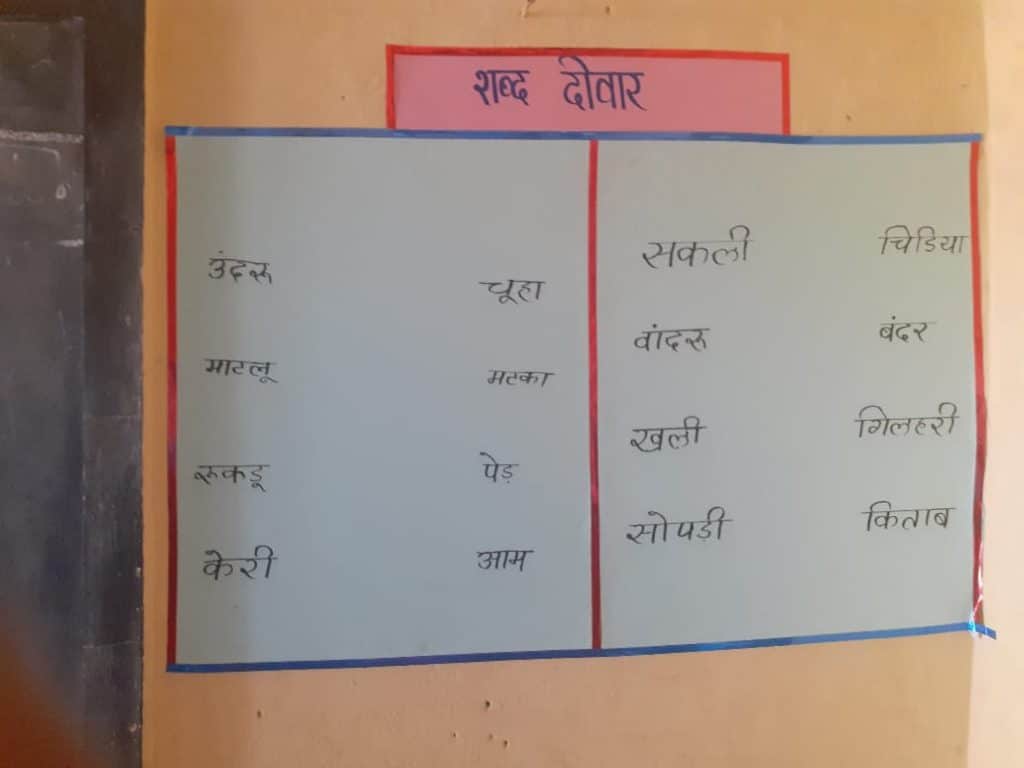
A good case study of how children’s mother tongue can be successfully adopted in school education is the state of Odisha. It has adopted 21 tribal languages in 1500 schools by appointing special language teachers and providing culturally responsive textbooks in tribal languages. Two decades of state political will and efforts by the government have led to translating the community demand for using their mother tongue in primary schools into multilingual education in tribal schools. While the NEP provides a space for mother tongue in school education, it is essential to look into the multilingual education programmes of other states as well. To accommodate an unwritten language in school, may take a long time but the result is both inclusive and positive. The mindset of educators to immediately achieve high learning outcomes without providing appropriate time and learning input is a problem in the system. Teachers in village schools are unable to understand the critical aspects of the national goals. Whether it is Total Quality Education, or Comprehensive and Continuous Education, or Learning Outcome movement, the wave of guidelines ends in mere information gathering, and the objective is limited to satisfy higher authorities with a show of evidence of each schools’ performance. The primary purpose is something else that almost always turns into data collection. When a programme is not grounded well in the field, then information gathering becomes a state-driven ritual where the teachers become information providers. At no level is the gathered information used as a means to understand ground realities or use it to act critically in resolving school-specific issues. For teachers, it means if you have looked at the data, explored the issues, and understood why somethings are not working, then you are the best person to resolve it through a native approach. Resolving language issues in the classroom is possible when teachers use multiple methods from their classroom situations and not through a prescriptive approach that is not grounded in their reality. Perhaps, the system needs to prepare such teachers, rather than those who act as the agents of state apparatus without their own agency, following the guidelines as employees, and perform their routine work.
It takes decades to validate an unwritten language or for a home language to get into the classroom language. Languages also follow a hierarchy and are closely linked to caste status, and in some cases, issues of untouchability. It is the system’s responsibility to schedule a language in the classroom and to provide equal status to all languages in the school. The Santali language as a speech community revitalized their language in the VIIIth schedule after a long struggle of 30 years, and now their language is the marker of achieving knowledge and power. There was a time when the current state languages were also grappling with language identity before stronger languages such as Arabic, Persian, or English. A broad vision and farsightedness are required for the system to realize its dream of transforming the schools with the Indian knowledge system expressed in many Indian languages of the children.
The author, Mahendra Kumar Mishra is the Advisor for Multilingual Education at Language and Learning Foundation, New Delhi. Previously, he served as the State Coordinator for Multilingual Education in School and Mass Education Department, Odisha. Email: mkmmle.llf@gmail.com
–







Recent Comments